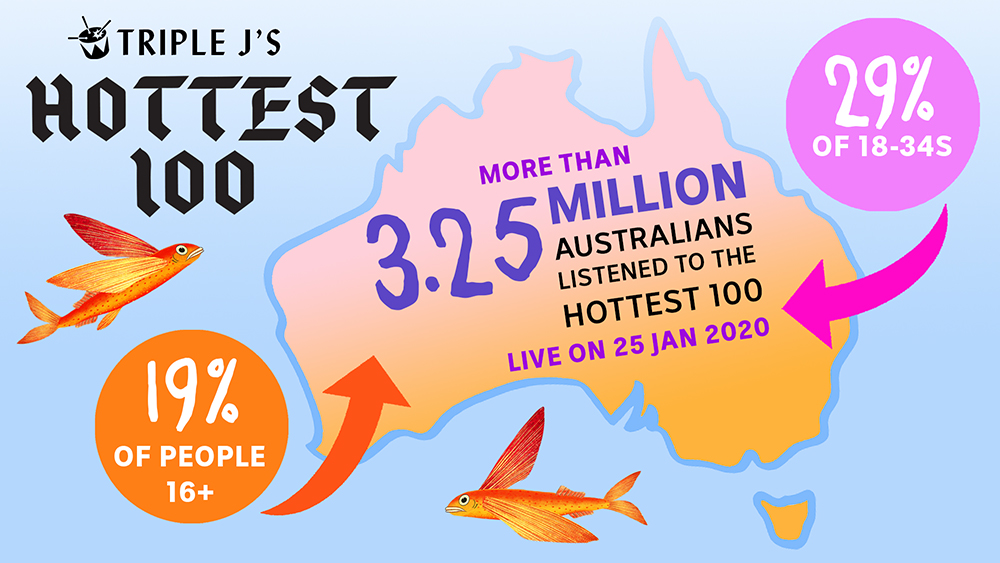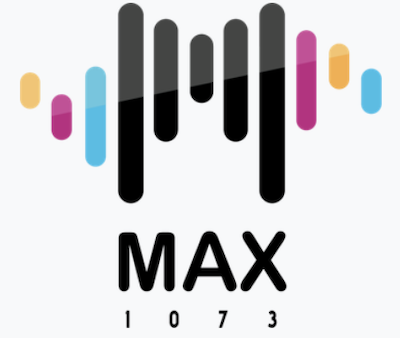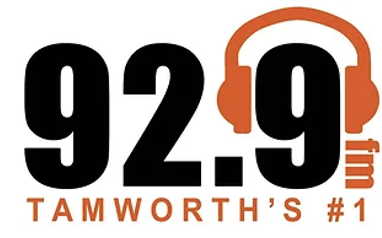‘Smashing records’: triple j’s Ollie Wards talks Hottest 100 milestones

Following triple j’s latest Hottest 100 countdown last month, the public broadcaster commissioned research into the listener numbers around the country, and came up with some seriously impressive numbers.
Almost a fifth (19%) of the population of Australia aged 16+ listened to the countdown, adding up to more than 3.25 million people.
Closer to triple j’s targeted demos, 29% of 18-24-year-olds listened, while 78% of listeners tuned in with other people.
38% of Australians aged 16 and over were across the Hottest 100 in some way. That was an estimated 6.67 million people listened, voted or checked it out online via social media, news coverage or the triple j website.
The report also found that 333,790 digital streams were being tuned into as the winner was announced. Those came from triple j app, website, smart speakers and other platforms around the globe.
With the countdown growing year on year, triple j has already received a big response ahead of its forthcoming Hottest 100 countdown of the decade (2010-2019).
Radio Today caught up with triple j content director Ollie Wards to reflect on those numbers, and chat about how triple j’s listener research differs from traditional radio listening numbers conducted in GfK ratings surveys.
3.25 million people tuned in to the Hottest 100. Can you either confirm or estimate whether that’s the most ever?
We’ve done this bespoke research for the last 3 years and the live listening figure has been pretty consistent over that time, with 19% of 16+ general population listening live on the countdown day.
But we certainly have seen the Hottest 100 growing and smashing records pretty much year on year in all other metrics like votes and social engagement.
Those that have engaged with Hottest 100 content in some way has increased 2% this year to 38% of Australians 16+, over 6 million people.
Besides numbers of people engaging with the Hottest 100, each year we create a deeper experience for the audience with more content and analysis across platforms.
The Hottest 100 goes from strength to strength. What do you put this year’s massive numbers down to?
In lots of ways the Hottest 100 is a culmination of triple j’s work across the year, supporting local artists from bedrooms and garages to mainstages and placing in the poll. The results are our listeners’ say on the year’s music and 2019 in particular turned out a really diverse list.
There were a lot of articles about the first solo female and youngest winner in Billie Eilish, we also saw the highest placing Indigenous artist with Thelma Plum coming in at number 9, as well as Top 10 artists we’ve first discovered on triple j Unearthed like Flume, Mallrat, G Flip and of course Tones and I.
So of course the artists are who make the countdown possible, by championing lots of young, diverse and local music we can be part of the what young people are passionate about. That translates to high engagement in the definitive music list of the year.
Each year too, we heavily debrief the Hottest 100 campaign and look for improvements in everything from the rollout to user experience on the voting site. It’s a poll of our listeners’ favourite songs of the year, it’s been that way for nearly 30 years – but we don’t rest on doing it the same way each year. That keeps us in step with our audience and makes the Hottest 100 better and better.
Tell us a bit about how the research was conducted into finding these numbers, and how it, for instance, differs from traditional radio ratings audience measurement?
With GfK’s radio ratings surveys, we only get average figures across a survey period, we’re not able to drill into data for specific days. Also, only the 5 mainland capital cities have survey methodology that we can use for a cumulative figure across the country, leaving out other cities and regions.
With triple j being a national network it’s important for us to understand our broader audience across all of Australia. So we’ve commissioned a bespoke general population, nationally representative survey to measure the Hottest 100.

A 10-minute quantitative survey was conducted with a nationally representative sample of the Australian population with quotas for age, gender and state/ territory, between 31 January and 10 February 2020. n=2003 completed the survey; a boost sample of 16-24 years was included. The data was weighted to reflect the population of Australia.
We expect to see a bump in triple j ratings in the first GfK survey of each year after the countdown. Do you have a strategy for trying to keep a hold of listeners whose first experience with triple j is listening to the Hottest 100?
We certainly do see an influx of new audience engaging with triple j around the Hottest 100. New listeners, downloads of our app, spike in social engagement all points to an entry point into the triple j community. So we have put a lot of thought into keeping our new audience beyond the Hottest 100, such as backing it up almost straight away with our live broadcast from Laneway Festival – showcasing our unique live music offering.
This year we’ve taken the opportunity to follow our Hottest 100 of 2019 by underlining the last 10 years in music. We’re in the middle of our Hottest 100 of the Decade, which we reckon will be the definitive list of the best songs of the 2010s. That’s continued the momentum of the annual countdown and given our new presenting lineup a great lift into the start of the year.
Given such a young audience engages with the Hottest 100 (85% of voters for the annual countdown were under 30), our fresh presenting lineup from 6am – 6pm weekdays should be connecting with our new audience.
Are you expecting the Hottest 100 of the decade to engage even more listeners, given the time period it expands, or do you think people might get countdown burnout?
It is definitely a challenge to pick 10 songs to vote for from 10 years! But we’re seeing a huge response for the Hottest 100 of the Decade already. We don’t expect that campaign to have the same engagement as the established annual countdown, but we’re finding as a special event our audience are still keen to be involved.
We do consider our use of the Hottest 100 brand carefully and don’t want to wear out its cultural impact, so just use it for special occasions like the close of the decade.



